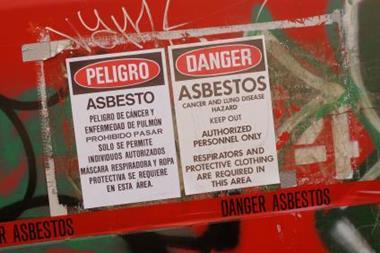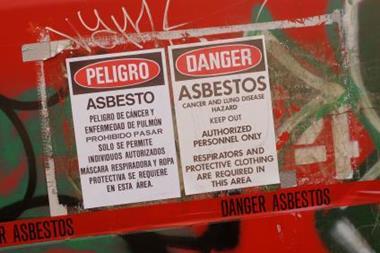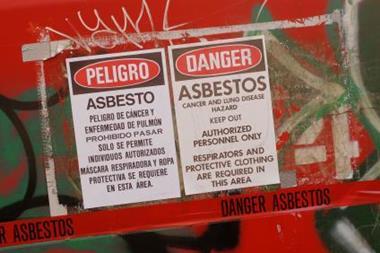Insurers could face costs in excess of £1bn if Court of Appeal judgment is upheld
Last week, a Court of Appeal decision sent shock waves throughout the insurance sector creating a huge amount of uncertainty about the future implications for asbestos-related claims.
The landmark judgment decided that some employers' liability policies would no longer protect asbestos victims from the date they were first exposed to the dangerous substance, removing much of the clarity set by a ruling in 2008.
Some industry commentators predict that if the ruling is upheld in the Supreme Court, it could generate costs in excess of £1bn.The decision also means that some claimants may not be compensated, as certain employers may not have adequate coverage in place.
The challenge to the 2008 ruling was brought by four run-off insurers: Municipal Mutual Insurance, Builders Accident, Independent and Excess. They hold that the claimant should only be compensated from the date from which the tumour developed rather than when they were exposed to the cancer causing material, an argument they won in MMI vs Bolton [2006].
New interpretations
Berrymans Lace Mawer partner Henry Bermingham explains: “Until 2006, insurers had always taken the view that El policies responded on a 'causation' basis, in other words if exposure took place during the life of the policy, and the adoption of the Boltonite approach had the effect of shifting insurer responsibility from exposure to the time when the tumour started to develop.”
In some cases, mesothelioma victims do not develop tumors until 30 to 40 years after the event, meaning that in a great majority of cases the insurers that took on policies from the older run-off insurers may now be liable for damages.
“We think it is manifestly wrong that people are, in hindsight, putting a different interpretation on their wordings to avoid the intention of the policies when they were first written,” argues Zurich’s disease claims manager, Mike Klaiber.
Word games
There is also a lot of confusion surrounding the wording of contracts. While the judges in the Court of Appeal took different approaches in the ruling, the following principles emerge. When the wording contains the word 'sustained', the policy that responds is the one that was in force when the tumour starts to develop.
However, when the policy contains the word 'contracted', then the policy in place at the time of the exposure to the cancer-causing material is the one that applies.
Consequently, Keoghs partner David Pugh believes this situation will pose a nightmare for claim departments. “It means that claims handling will become more difficult because you have to remind yourself of the precise detail of the judgment and how that policy was written and get a sample of the clause. It makes claims handling much clunkier.”
He estimates that if the judgment is allowed to stand, insurers could be facing potential liabilities in excess of a £1bn.
Watch and wait
The lack of clarity surrounding the decision means that the judgment will almost certainly be appealed in the Supreme Court.
Beachcroft partner and head of the disease group Paula Jefferson says: "The decision appears to create more uncertainty and confusion over EL policies at a time when there needs to be greater clarity. To some extent, the court felt uncomfortable that it was bound by previous Court of Appeal decisions and the best thing that can happen is that the Supreme Court has the chance to create that clarity."
It seems that there is little insurers can do but wait and mark a date in their diary for the Supreme Court’s decision.



































